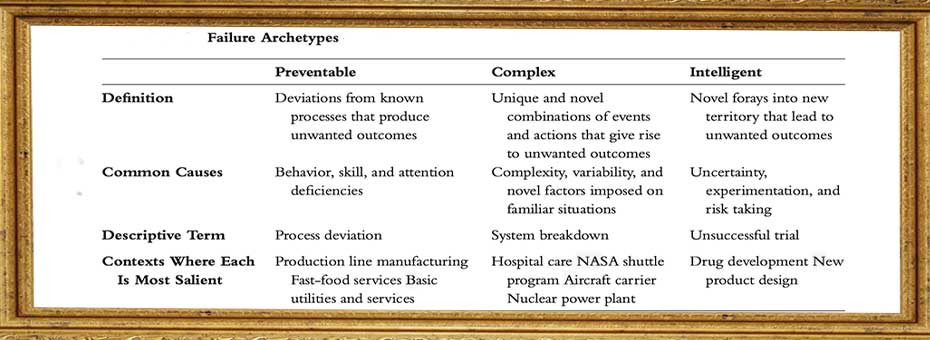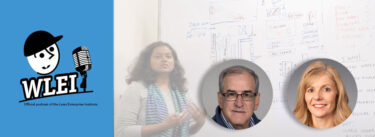To get people on the same page, with common goals and a shared appreciation for what they’re up against, you must master the essential leadership skill of framing the work.
“Great leaders manage frames intentionally – with a close eye on context.”The skill of framing the work starts with a basic appreciation of the power of cognitive frames. What are frames? Psychologists describe frames as assumptions or beliefs that we layer onto reality. All of us are constantly, automatically, framing the situations around us. Because we focus on the situation itself, we tend to be blind to the effects of our cognitive frames on our interpretation of what we see, nor how they shape our behavioral reactions. In turn, our frames are shaped by our prior experiences, which thus affect how we think and feel about what’s presently around us in subtle ways. The catch is that we have a visceral experience of seeing reality—seeing what is actually there – rather than recognizing that what we see is filtered through our cognitive frame. The leadership act of framing is a process of deliberately creating meaning, often imposing new frames on others. Those new frames are accurate and appropriate for the situation but have not yet been appreciated by others.
Great leaders understand this and manage frames intentionally – with a close eye on context. Different types of work call for different framing. If near-perfection is what is needed to satisfy demanding car customers, leaders must know to frame the work by alerting workers to the opportunity to catch and correct tiny deviations before the car proceeds down the assembly line. Workers must adopt a kaizen frame that celebrates the value of learning—to become willing to engage in the unnatural act of speaking up about tiny imperfections. If zero worker fatalities in a complex and dangerous platinum mine is the goal, then leaders must frame physical safety as a worthy, challenging – but attainable – goal. They must frame reality in such a way that workers know their own eyes and ears are vital sensors to the shared goal of vigilance in a complex, dangerous context. If discovering new cures is the goal, leaders know to motivate researchers to generate smart hypotheses for experiments that may very well fail, so that they feel okay about being wrong far more often than being right. Let’s reflect on how and why framing the work includes reframing failure and clarifying the need for voice.
Because fear of (reporting) failure is such a key indicator of an environment with low levels of psychological safety, how leaders frame the role of failure is essential. The CEO of X (a subsidiary of Alphabet, and sibling of Google) Astro Teller (aka “Captain for Moonshots”) has observed that “the only way to get people to work on big, risky things…is if you make that the path of least resistance for them [and] make it safe to fail.” In other words, unless a leader expressively and actively makes it psychologically safe to fail, people will automatically seek to avoid failures. So how did Teller reframe failure to make it okay? By saying, believing, and convincing others that “I’m not pro failure, I’m pro learning.” That’s a framing statement – and an immensely powerful one for helping innovators take smart risks!
“Reframing failure starts with understanding a basic typology of failure types.”Failure is obiously a source of valuable data, but most people still don’t like failing. So, leaders must communicate that learning only happens when there’s enough psychological safety to dig into failure’s lessons carefully. In his book The Game-Changer, published while he was still CEO of Proctor and Gamble, A.G. Lafley does this when he lists his 11 most expensive product failures, and describes why each was invaluable to the company’s path forward. Similarly, Pixar co-founder Ed Catmull assures Pixar animators that movies always start out bad, to help them “uncouple fear and failure.” In doing so, Catmull is trying to help people appreciate that this is the kind of work for which stunning success occurs only if you’re willing to confront the “bad” along with the “good.” Similarly, OpenTable CEO Christa Quarles tells employees, “early, often, ugly. It’s O.K. It doesn’t have to be perfect because then I can course-correct much, much faster.” This too is a framing statement. It says that success in the online restaurant-reservation business occurs through fast action and course correction—not through magically getting it right the first time. Quarles is framing ‘early, ugly’ versions as vital information for getting feedback from users to inform the decision-making that will lead to later, beautiful versions.
Note that failure plays a varying role in different kinds of work. For high-volume repetitive work, such as in an assembly plant, a fast-food restaurant, or even a kidney dialysis center, failure is rare but can be consequential. Failing to correctly plug a patient into a dialysis machine or install an automobile airbag in precisely the right manner can have disastrous consequences. So, in routine work it’s vital that people catch, report, or correct deviations from best practice. Here, celebrating failure is a matter of viewing deviations as “good catch” events (a powerful reframe) and acknowledging the people who noticed tiny flaws as observant contributors to the mission.
In contrast, for innovation and research, where little is known about how to obtain a desired result, failures are frequent and usually happen behind closed doors, without affecting customers or broader communities. Creating a movie, a line of original clothing, or a technology that converts seawater to fuel are all examples of innovation. In this context, dramatic failures must be courted and celebrated along the way, because they are an integral part of the journey toward success. Finally, in complex operations, such as hospitals or financial institutions, failures can occur at any time due to unexpected combinations of forces. Here, vigilance and teamwork are both vital to preventing avoidable failures and celebrating intelligent ones.
Reframing failure starts with understanding a basic typology of failure types. Failure archetypes include preventable failures (never good news), complex failures (still not good news), and intelligent failures (not necessarily fun, but still must be considered good news because of the value they bring). Preventable failures are deviations from recommended procedures that produce bad outcomes. If someone fails to don safety glasses in a factory and suffers an eye injury, this is a preventable failure. Complex failures occur in familiar contexts when a confluence of factors come together in a way that may never have occurred before; consider the severe flooding of the Wall Street subway station in New York City during Superstorm Sandy in 2012. With vigilance, complex failures can sometimes, but not always, be avoided. Neither preventable nor complex failures are worthy of celebration.
“Above all I believe great leaders display two simple qualities: humility and curiosity.” In contrast, intelligent failures, as the term implies, must be truly celebrated so as to encourage more of them. Intelligent failures, like the preventable and complex, still comprise results no one wanted. But, unlike the other two categories, they are the result of a thoughtful foray into new territory. The table (see chart at top of page) shares definitions and contexts to clarify these distinctions. An important part of framing is making sure people understand that failures will happen. Some failures are genuinely good news; some are not, but no matter what type they are, our primary goal is to learn from them.
It’s a real challenge to actively frame the work to promote learning. As a society we have long celebrated command and control, a model that I believe is showing its age everywhere. Today more people recognize the value of what is sometimes called servant leadership (or enlightened leadership), which starts by saying that nobody has all the answers, even—and especially—the top leaders. Thoughtful leaders realize that innovation requires ideas from all over; they understand that continuous learning in more routine operations requires input from everybody.
And these psychological-safety-building leaders can be identified less perhaps by drilling down on their daily behavior and more by identifying the elements of working in a fearless organization that they support. I see this as a strong leadership stance. These leaders are often strong, and influential, and make a difference in people’s lives.
But above all I believe they display two simple qualities: humility and curiosity. Curiosity, because if you’re someone who recognizes fully that you don’t have all the answers, that ought to trigger a curious stance. You should be insatiably interested in learning what you don’t know, curious about what others know, curious about what the customers want and curious about where we’re headed next in some industry or another.
“It’s a real challenge to actively frame the work to promote learning.”That comes down to no more than keeping alive as an adult the natural human curiosity that all children display. And I believe that starts with a frame of recognition that I don’t know everything. If I’m curious and recognize I don’t know everything, that is a kind of humility. It’s what we might call situational humility, which is the very nature of the specific situation we find ourselves in.
Humility and curiosity naturally invite others to step up. They make people feel like “wow, I matter.” It helps people feel like what they have to say is welcome, and it matters. It feels like it matters that I come to work today.
I’d like to close with a passage from a 2003 California Management Review article I wrote, entitled Framing for Learning:
“Framing provides leverage. How we think shapes our behavior, which in turn influences whether and how effectively we obtain desired results. This basic causal chain has been identified in different research traditions from cognitive psychology, to behavioral therapy, to organizational learning. Furthermore, there is broad agreement that it is difficult to change behavior or to obtain different results without changing the underlying cognitions that give rise to and support the desired behaviors. Thus, when hoping to change results, framing is the place to start.”
Amy’s new book is The Fearless Organization: Creating Psychology Safety in the Workplace for Learning, Innovation, and Growth (Wiley, 2019).





